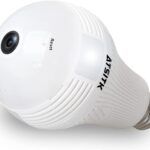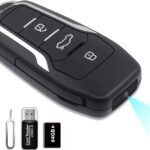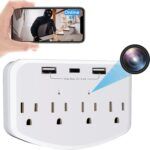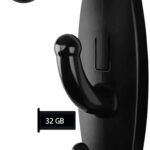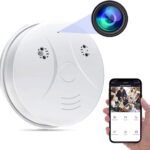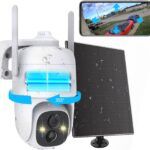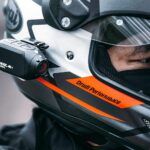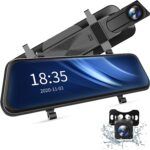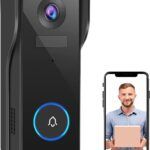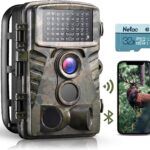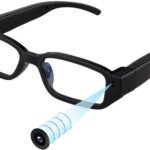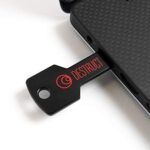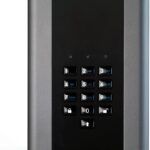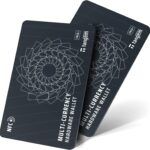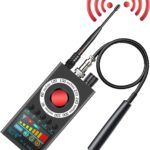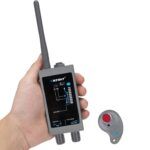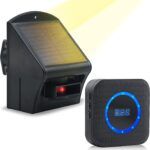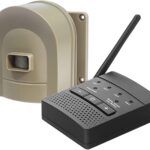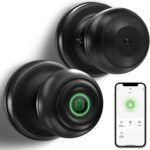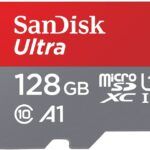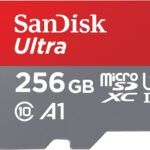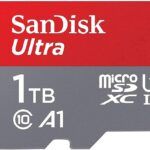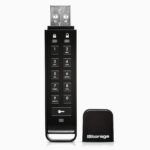- How does geofencing work?
Geofencing is a location-based service that uses global positioning system (GPS), cellular data, and radio-frequency identification (RFID) technology to define a virtual boundary around a specific geographic area. When a mobile device or object equipped with a geofencing system enters or exits the predefined boundary, it triggers a specific action or alert. For instance, when a delivery truck with a geofencing system enters a warehouse, it sends an alert to the dispatcher, indicating that the truck has arrived. Similarly, a geofencing system can trigger an alarm or notification when a person enters or leaves a specific location, such as a home or office.
Geofencing technology can also use multiple geofences, allowing for more complex monitoring and triggering of actions. For instance, a geofencing system can be configured to trigger an alert only when an object or person enters a specific area within a larger boundary. Additionally, geofencing systems can be integrated with other technologies, such as surveillance cameras, access control systems, and analytics software, to provide enhanced security and real-time monitoring capabilities.
- What are some common uses of geofencing?
Geofencing technology has a wide range of applications across various industries. One common use of geofencing is in the field of marketing. Businesses can use geofencing to target customers with location-based advertisements and promotions when they enter a specific area. For example, a restaurant may send a promotion for a lunch special to customers who are within a certain radius of the restaurant’s location.
Geofencing is also used in the transportation industry for fleet management. Companies can set up geofences around delivery zones, construction sites, or other designated areas to track the location of their vehicles and ensure that they are within the approved areas. Geofencing can also be used for safety and security purposes, such as setting up geofences around hazardous areas to restrict access and prevent accidents or setting up geofences around schools or other sensitive areas to alert authorities of any unauthorized entry.
- How accurate is geofencing?
Geofencing accuracy can vary depending on the technology and methods used. Generally, GPS-based geofencing can be highly accurate, with an accuracy of up to a few meters. However, it can be affected by environmental factors such as buildings and trees, which can interfere with the GPS signal. This can result in inaccuracies, especially in urban areas where there are many obstructions.
Other forms of geofencing, such as cellular network-based or Wi-Fi-based, may not be as accurate as GPS-based geofencing, but can still provide a useful level of location tracking. For example, cellular network-based geofencing uses triangulation between cellular towers to determine a device’s location, which can have an accuracy of a few hundred meters. Wi-Fi-based geofencing can also have an accuracy of a few meters by detecting a device’s location based on the strength of nearby Wi-Fi signals. Ultimately, the accuracy of geofencing depends on the specific technology used and the environmental factors that can affect it.
- What are some potential privacy concerns with geofencing?
While geofencing has many practical uses, it also raises privacy concerns. Geofencing relies on location data, which can be obtained from a variety of sources such as GPS, Wi-Fi, and cell towers. As a result, users may be uncomfortable with the level of tracking and monitoring required for geofencing to work effectively. The ability for businesses and organizations to track users’ movements and behavior raises questions about the use of this information and the potential for it to be misused. Additionally, hackers could potentially access this data and use it for malicious purposes.
Another concern with geofencing is the potential for false positives. If the geofence is not set up correctly, it can lead to false alerts and notifications, which can be frustrating for both the user and the business or organization using geofencing. In addition, the accuracy of geofencing can be affected by factors such as GPS signal strength and environmental conditions, which can lead to inaccurate location data. This can result in unnecessary alerts for users.
- What is the difference between geofencing and GPS tracking?
Geofencing and GPS tracking are both location-based technologies, but they differ in their approach and functionality. Geofencing works by creating virtual boundaries around a physical location or a specific area of interest. These boundaries are defined using GPS coordinates or other location-based technologies such as Wi-Fi or cellular network signals. Once a geofence is set up, it can trigger an action or a notification when a device or person enters or exits the designated area. Geofencing is often used for location-based marketing, home automation, fleet management, and personal safety applications.
On the other hand, GPS tracking is a real-time location tracking system that uses GPS technology to pinpoint the location of an object or person in real-time. It involves the use of GPS receivers, satellites, and a tracking device to determine the exact location of the tracked object. GPS tracking can be used for fleet management, personal tracking, and asset tracking. Unlike geofencing, GPS tracking provides real-time data on the location, speed, and direction of the tracked object.
Essentially, GPS will tell you an exact location of an object being tracked, whereas geofence will alert you if that object’s location leaves or enters your predefined zone.
- Can I customize the shape and size of a geofence?
One of the benefits of geofencing is that it can be fully customized to suit the user’s needs. This includes the shape, size, and location of the geofence. Geofences can be created in any shape, including circular, rectangular, or even irregular shapes. The size of the geofence can also be adjusted based on the specific use case. For example, a geofence for a large warehouse or industrial complex would need to be much larger than a geofence for a small retail store. Some geofencing tools also allow for multiple geofences to be created and layered on top of each other, providing greater flexibility and customization.
In addition to shape and size, users can also customize the triggers and notifications associated with the geofence. This includes setting specific entry and exit points, creating custom alerts or messages, and even integrating with other tools or systems such as security cameras or automation systems. Overall, the flexibility and customization of geofencing make it a powerful tool for a wide range of use cases.
- Can I set up multiple geofences?
It is possible to set up multiple geofences for different locations and purposes. With most geofencing software and platforms, users can create and customize multiple geofences based on specific locations, shapes, sizes, and time frames. This can be useful for businesses or organizations that want to track the movements of their assets, employees, or customers in different areas. For example, a company with multiple locations can set up geofences around each site to monitor the arrival and departure of employees, delivery trucks, or other vehicles.
- Is geofencing legal?
The legality of geofencing varies depending on the purpose and context in which it is used. In general, businesses and individuals are legally allowed to use geofencing as a tool for location-based marketing, asset tracking, and other non-invasive purposes, as long as they comply with relevant privacy and data protection laws. However, the use of geofencing for surveillance or tracking purposes without the knowledge or consent of the person being tracked may be illegal in some jurisdictions.
It is important for businesses and individuals to be aware of the legal implications of using geofencing and to ensure that their practices comply with applicable laws and regulations. In addition, it is important to obtain consent from individuals before tracking their location and to be transparent about how their data will be used. Overall, geofencing can be a powerful tool for businesses and individuals, but it should be used responsibly and in compliance with applicable laws and regulations.
Geofencing allows you to set up virtual boundaries and receive notifications when a spy tracker enters or exits the designated area.
If you use GPS, bluetooth or other hidden trackers to keep an eye on vehicles or people, geofencing will alert you when they move from certain predefined locations.
Showing all 8 products:

LeonardCreek Pet GPS Tracker & Locator
$29.99
Optimus Car GPS Tracker (OBD Plug-In)
$59.95
Optimus Vehicle GPS Tracker (Car Battery Installation)
$69.95
Optimus Vehicle GPS Tracker (Wireless)
$39.95
Tracki Tiny GPS Tracker (Worldwide Track)
$15.69
Tractive GPS Cat Tracker
$49.99
Tractive GPS Dog Tracker
$49.99
Zeerkeer Mini GPS Tracker
$66.98
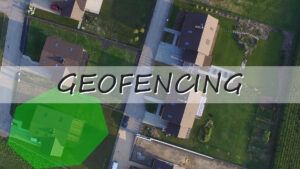
What is geofencing?
GPS and other trackers have become increasingly popular in recent years as more people look to keep tabs on their vehicles, loved ones, and assets. One of the most powerful features of these trackers is geofencing, which allows users to set up virtual boundaries and receive notifications when their tracker enters or exits the designated area.
Why is geofencing useful?
Geofencing is particularly useful for businesses that need to track their fleet of vehicles or equipment. For example, a construction company can set up geofencing around their job sites to ensure that their vehicles and equipment remain on-site and are not being used for unauthorized purposes. This can help prevent theft and unauthorized usage, which can save the company time and money in the long run.
Geofencing can also be used for personal tracking, such as keeping tabs on children or elderly family members. Parents can set up geofencing around their child’s school or a specific area of the neighborhood to ensure that their child is where they are supposed to be. This can provide parents with peace of mind and allow them to quickly respond if their child leaves the designated area.
Other uses and features?
In addition to geofencing, GPS and other trackers often include other useful features such as real-time tracking, speed alerts, and driving reports. Real-time tracking allows users to see the exact location of their tracker at any given time, while speed alerts can notify users when their tracker is traveling above a certain speed limit. Driving reports provide detailed information about a vehicle’s usage, including miles driven, time spent driving, and maximum speeds.
Does every spy tracking device have geofencing?
It’s important to note that there are different types of trackers available, and not all of them offer geofencing features. Some trackers are designed for specific purposes, such as tracking pets or luggage, while others are more versatile and can be used for a variety of applications.
How to buy a good hidden tracker with geofencing feature
When choosing a GPS or other tracker with geofencing capabilities, it’s important to consider factors such as battery life, ease of installation, and data plan requirements. Some trackers require a SIM card and data plan, while others are self-contained and do not require additional fees. It’s also important to consider the range and accuracy of the tracker, as well as the quality of the accompanying app or software.
Geofencing FAQs
Overall, GPS and other trackers with geofencing features can be a valuable tool for both personal and business use. They provide peace of mind and can help prevent theft and unauthorized usage, while also providing valuable insights into a vehicle’s usage and performance. With so many different options available, it’s important to do your research and choose a tracker that meets your specific needs and requirements.
Narrow down your product needs:


